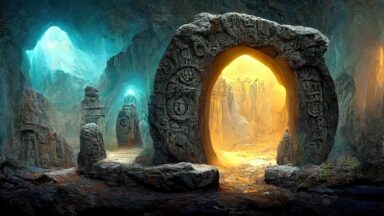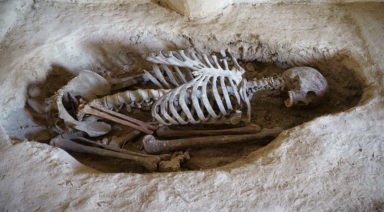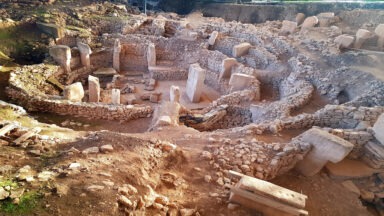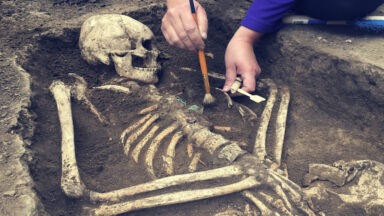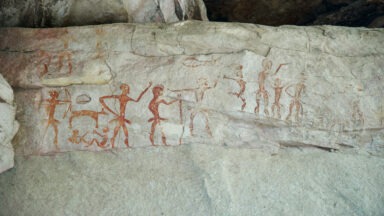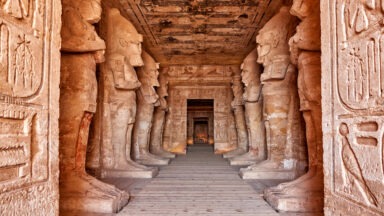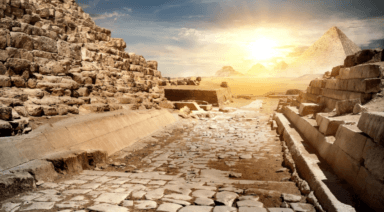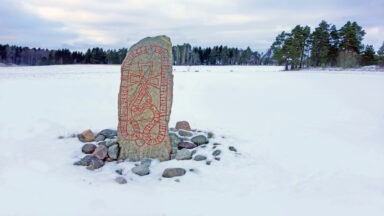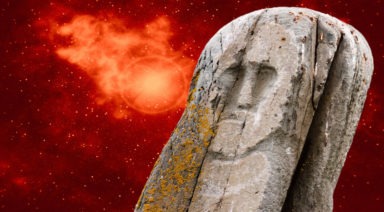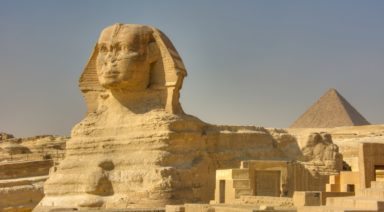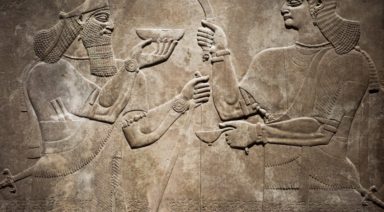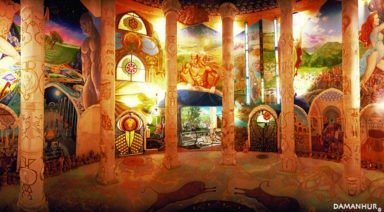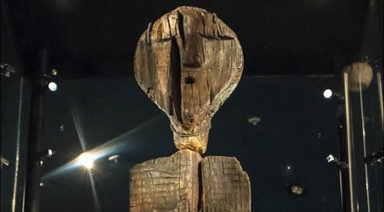Has The Lost Ark of the Covenant Been Found in Israel?
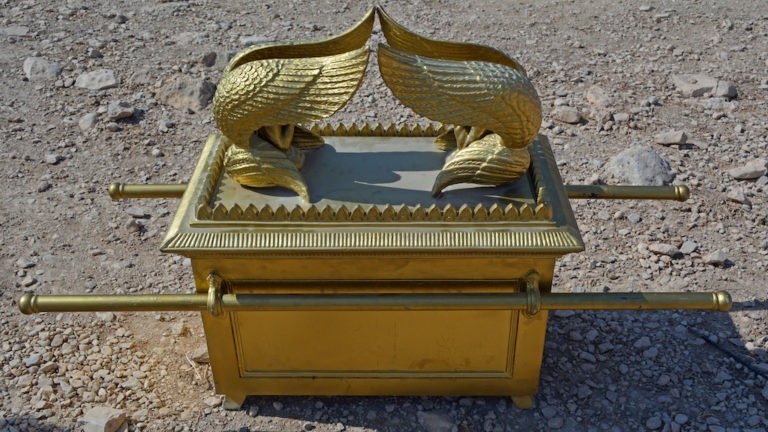
The ancient city of Ekron — later to be renamed Lod — was known as one of five great Philistine cities, founded in the 12th century B.C.E. in Southwestern Canaan. Under Assyrian rule, it had become the largest olive-oil production center in the ancient Near East. Biblically speaking, wrote one historian, Ekron was the last place to which they carried the Ark of the Covenant before it was returned to Israel (1 Samuel 5:10; 6:1-8). The Ark is said to have been wrested from the Children of Israel during a battle, but as its new guardians experienced unexpected catastrophes they feared resulted from its presence, the Philistines had decided it was too much trouble to keep. Here we are, thousands of years later, and Israeli archaeologists may have stumbled upon a clue to the Ark’s actual existence.
The Ark’s Illustrious History
The Bible states that the Ark of the Covenant found its first resting place in Siloah, near Jerusalem, after the ancient Jews had expelled the Canaanites from the Promised Land. And then, after losing a battle to the Philistines, the Ark was captured. God punished the Philistines with a plague, and the artifact was returned to the Israelites, who placed it in Beth Shemesh, where it remained for years before King David had it taken to rest in Jerusalem.
National Geographic reporters Richard Lovett and Scot Hoffman wrote that, according to Biblical accounts, the Ark was about the size of a 19th-century seaman’s chest, made of gold-plated wood and topped with two large, golden angels. It was carried using poles inserted through rings on its sides.
The story of the Ark is, at the very least, legendary in that it is integral to several of the Old Testament’s miraculous stories. It was carried during the Exodus out of Egypt and is said to have cleared impediments and poisonous animals from the path of the “chosen people” as they made their way through the harsh desert. When the Israelites crossed the Jordan River into the Promised Land (modern-day Israel), the river is said to have stopped flowing the moment the Ark-bearers set foot in it.
Later in history, when the Israelites besieged Jericho, they carried the Ark around the city for a week, blowing trumpets until, on the seventh day, the walls fell down, awarding them with their famed conquest. In 597 and 586 B.C.E., wrote Lovett and Hoffman, the Israelites were conquered by the Babylonians, and the Ark vanished from history. Whether it was destroyed, captured, or hidden–nobody knows.
Have Archaeologists Found the Ark of the Covenant?
On the same hilly desert terrain in Lod, where Israel’s first air force trained in 1948, the Philistines had once hitched two cows to a wooden cart to sluggishly carry the Ark of the Covenant back to its rightful heirs, the Israelites. Now researchers are reporting that Israeli archaeologists may have uncovered a link to the lost Ark that contained the original Ten Commandments that were bestowed upon Moses by the God of the ancient Hebrews. Archaeologists may have possibly found a temple with a stone where the shrine once rested. The site of this structure is a half-hour Southeast of Lod and carries the potential to verify the authenticity of the Biblical story.
Israeli newspaper Haaretz reported that archaeologists excavating a 3,100-year-old temple in the ancient settlement of Beth Shemesh, west of Jerusalem, have uncovered an unusual stone table that seems to match that which was described in the Bible as playing a role in the story of the Ark of the Covenant. Beth Shemesh was once a border town between the Israelites and the Philistines, in a region where the two peoples often clashed.
Tel Aviv University archaeologist Zvi Lederman announced to the media, “This would be a rare case in which we can merge the Biblical narrative with an archaeological find.” Lederman is leading the Beth Shemesh to dig along with his colleague Dr. Shlomo Bunimovitz.
Bunimovitz said, “There is a lot of evidence that this was indeed a temple…When you look at the structure and its content, it’s very clear that this is not a standard domestic space but something special.”
When one faces the East with the rising of the sun, the structure opens onto a platform commonly used for religious ceremonies. Inside what archaeologists are calling the temple, there are two large round concave stones into which gutters had been carved. These may have been used for wine and/or small olive presses to produce sacred oil, according to Lederman. In the immediate area, there is also a treasure trove of decorated artifacts — jugs, cups, and a pile of animal bones, which are all hints that rituals took place at the site. At some point in the mid-12th century B.C.E., the structure was purposefully destroyed, and the pottery vessels had been smashed to pieces.
Lederman told Haaretz that the site was at some point turned into an animal pen and covered with dung. He said, “To me this is an act of hostility, an intentional desecration of a holy place.” It is suspected that the Philistines may have been responsible for the sacrilege.
Appearances and Disappearances
In 1993, best-selling author and historical researcher Graham Hancock wrote Sign and the Seal: The Quest for the Lost Ark of the Covenant, a book that referenced the fact that the Old Testament contains “hundreds of references to the Ark’s power to level mountains, destroy armies, and lay waste to cities.” Yet the Ark, noted Hancock, mysteriously disappeared from recorded history after the building of the Temple of Solomon.
According to Hancock and many Christian Ethiopians, the Ark of the Covenant had made its way to Ethiopia. In 2007, Smithsonian Magazine reported that, according to the Bible’s First Book of Kings, King Solomon built the First Temple in Jerusalem to house the Ark. It was venerated there during Solomon’s reign (c. 970-930 B.C.E.) and beyond. From here, the story reads more like a script from a Steven Spielberg movie, because the Ark is said to have made its way to a chapel in the small town of Aksum, in Ethiopia’s Northern highlands, where it still rests. It arrived nearly 3,000 years ago, claim Ethiopian Christians, and has been guarded by a succession of virgin monks who, once anointed, are forbidden to set foot outside the chapel grounds until they die.
Smithsonian Magazine reported that the story of the Ark’s appearance in Ethiopia is told in the Kebra Negast (Glory of the Kings), Ethiopia’s chronicle of its royal line. Accordingly, the Queen of Sheba, one of Ethiopia’s first rulers, traveled to Jerusalem to confer with King Solomon’s wisdom. But, apparently, the queen and king did more than walk and talk. On her return trip, Sheba gave birth to Solomon’s son, Menelik, who later went to visit his father. He was accompanied home by the sons of some Israelite nobles who had made off with the Ark (unbeknownst to Menelik). This is how the ark, now a stolen artifact, ended up in Ethiopia. When Menelik eventually learned of the theft, he reasoned that since the ark hadn’t destroyed him or the thieves, it must have been God’s will that it remain with him.
And now, say the Ethiopians, the Ark is hidden in a church in Aksum–a small city in the northern highlands–and guarded by a single monk. The truth may be out there, but where is the “there”?

David Brings the Ark of the Covenant to Jerusalem (2 Samuel 6)
The Significance of the Ark
Ancient Origins reports that the recent findings of the temple at Beth Shemesh could be remarkable if proven correct because people have been searching for the Ark for centuries. The Ark was and still is, believed to house the original Ten Commandments, broken by the hands of Moses descending from Mount Sinai, angry at the repugnant sight of his tribesmen engaging in all sorts of debauchery in the foothills. The Ark, then, not only symbolizes God’s communication to Moses and his people, but also a profound gift with no equal.
National Geographic Society fellow and archaeologist Fred Hiebert once said that searches for biblical relics are compelling, but ultimately doomed to failure. Even if there is an ancient, Ark-like object in Ethiopia, it’s still impossible to determine if it is one of the Biblical legends: “We are talking about things [at] the crossroads between myth and reality,” he said. “I think it’s great to have stories like [that of] the Ark of the Covenant. But I do not believe, as a field archaeologist, that we can use the scientific method to prove or disprove [them].”
Could Hiebert be proven wrong or is this yet another one of those cases?
Did Our Ancestors Know How to Open A Portal to Another Dimension?
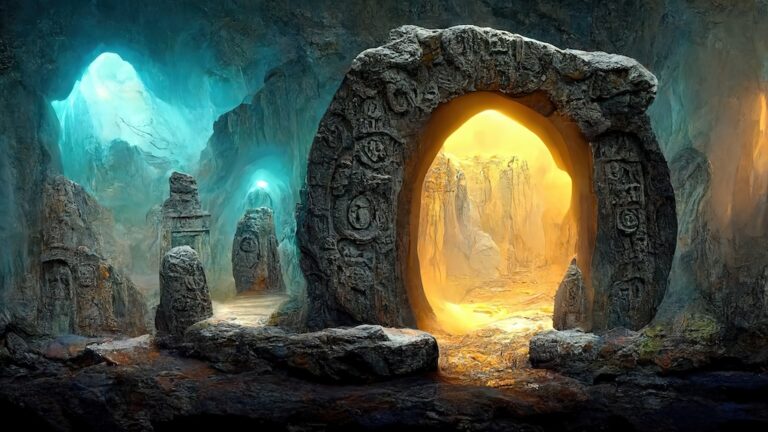
There are several areas across the world known to be energetic hotspots – from ancient megaliths to Ley Lines, these areas are often alleged to produce hyperdimensional gateways. While we don’t exactly know how to open a portal to another dimension, there is evidence the phenomenon could exist. And now it seems science may be catching on to the possibility.
Typically, portal areas have some type of electromagnetic significance and are located near large deposits of quartz or other minerals with piezoelectric properties. So, it was less of a surprise when NASA announced in 2012 that the University of Iowa physicist Jack Scudder, found hard evidence of portals created by the interaction between the Earth and Sun’s magnetospheres.
These portals exhibit extreme volatility and unpredictability, opening and closing in an instant. But Scudder found markers, called x-points or electron diffusion regions, which allowed NASA probes to locate and study them.


